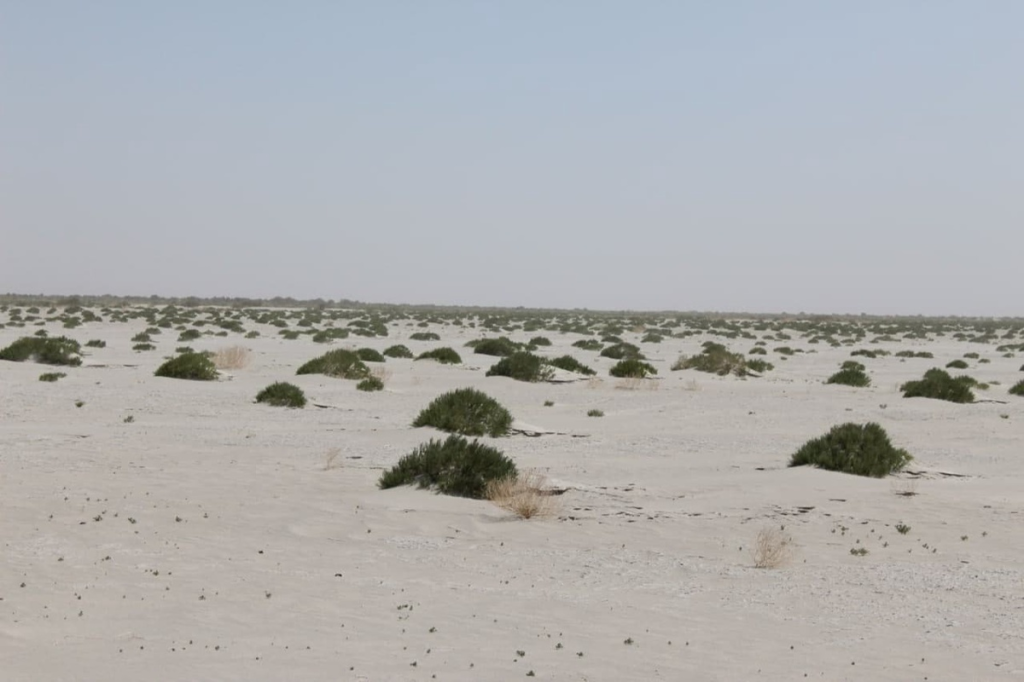
The findings of a fundamental study conducted by scientists of the Institute of Botany of the Academy of Sciences of the Republic of Uzbekistan, based on many years of observation of the ecological restoration processes on the dried bed of the Aral Sea, have been published in the prestigious international scientific journal “Ecological Indicators” under the title “Vegetation colonization and biodiversity dynamics on the exposed Aral Sea bed: A 35 years investigation”. This work marks an important milestone in the ecological study of the consequences of the Aral Sea tragedy.
According to the Academy of Sciences, the authors of this comprehensive study examined the 35-year dynamics of stable plant communities and ecosystems forming on the dried seabed of the Aral Sea.
Botanical scientists assessed the dried bed of the Aral Sea, classified as “critical” in the IUCN Red List of Ecosystems, as a dynamically developing modern system, identifying five main ecosystem types. The researchers discovered patterns in the succession of more than 30 dominant plant species through the phenomenon of landscape interference. They analyzed these patterns in relation to soil mechanical composition, salinity levels, and groundwater depth.
During the study, the formation of 65 ecotopes was recorded, a unique classification scale based on ecological criteria was developed, and predictions were made regarding the future development of these ecosystems.
Thus, 35 years of observations have shown that as vegetation spread across the dried Aral Sea bed, five distinct ecosystems emerged. Scientists associate this process with the influence of edaphic (soil-related) and hydrological factors.
The mechanical composition of the soil is a decisive factor in the formation of ecosystems, which has been statistically validated through specialized software analyses.
It has been scientifically proven that sandy soils and soils of medium density, along with groundwater at a depth of 1.0-1.5 meters, enable the formation of high phytomass and greater plant diversity.
In areas with a high degree of soil salinity, simple plant communities are typically found, consisting of only one type of salt-tolerant vegetation.
Vegetation succession occurs differently in nature: in some areas it is fragmented, while in others it follows a recurring pattern. The analyses conducted show that various ecosystems are formed depending on land properties such as soil moisture, salinity, and other factors.
Projections for the period up to 2030 indicate that the area of new and restored ecosystems on the Aral Sea bed will continue to expand, while the presence of temporary (ephemeral) plant species is expected to decrease.
However, it has been proven that, regardless of the challenging conditions, the presence of sufficient soil and water enables the formation of stable plant communities in these areas.
This publication represents one of Uzbekistan’s international achievements in geobotany and serves as a scientific foundation for the development of sustainable environmental strategies in the Aral Sea region.
M. Eshmirzayeva, UzA








